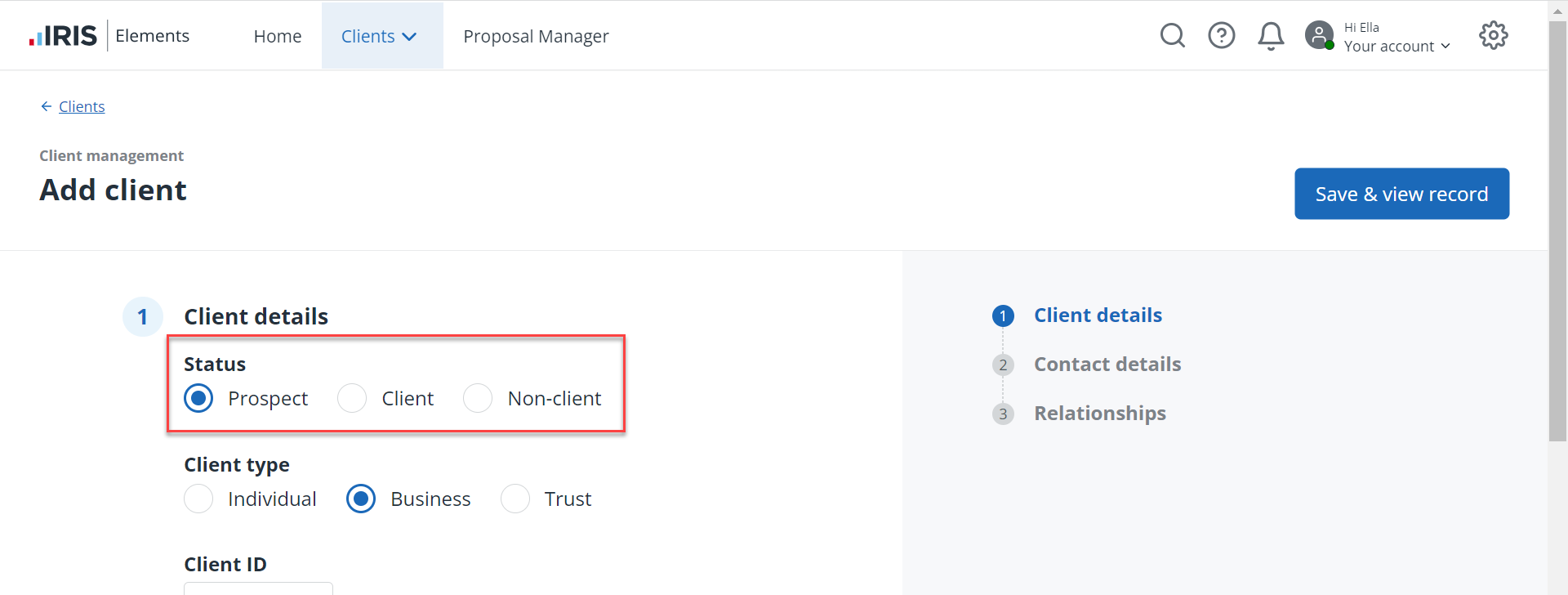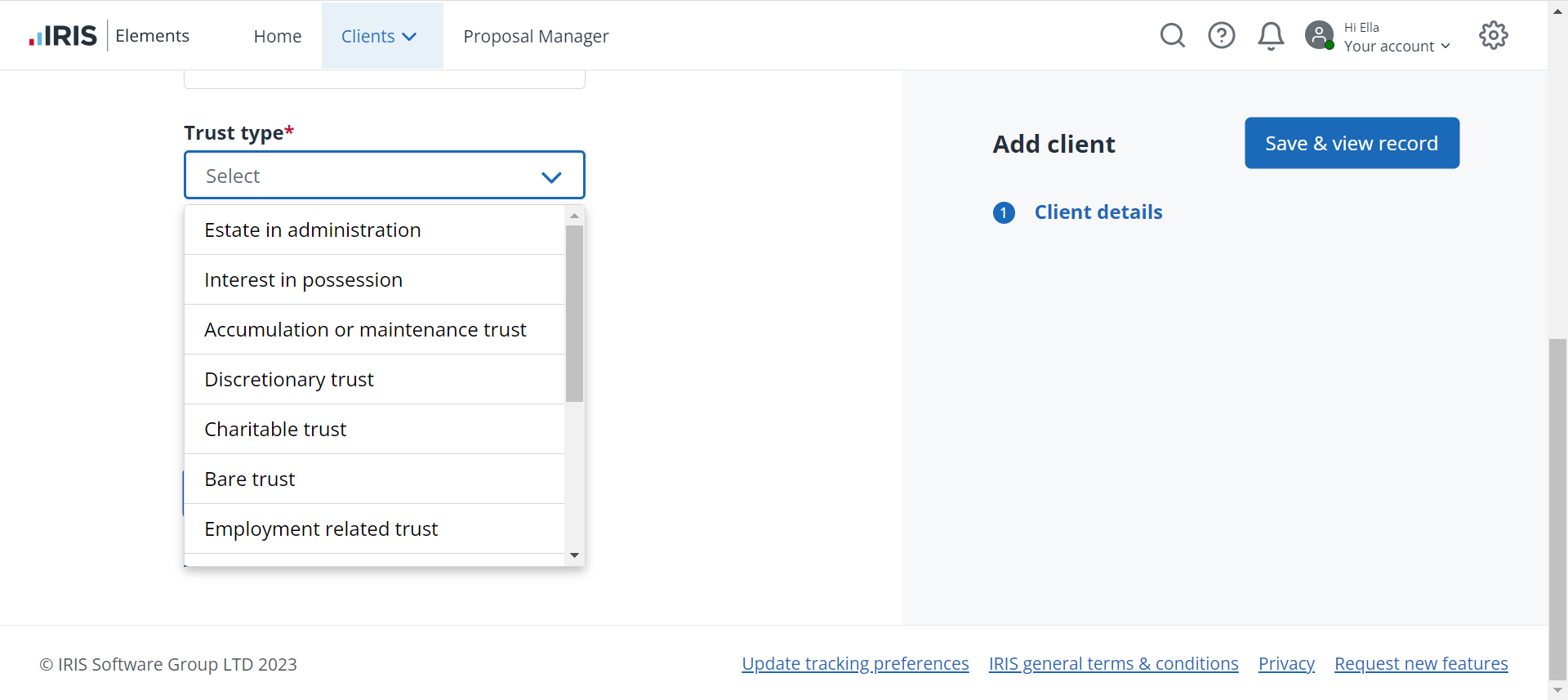Overview of clients in IRIS Elements
It’s important you know how clients are managed and structured in IRIS Elements.
Each client record has a core structure of Status and a Client type. Client records are linked together by adding Relationships.
Client statuses
The Client status records the stage or nature of your working relationship with an individual, business or trust.

Prospect
A Prospect is someone you hope to provide services for in the future.
Client
A Client is someone you provide (or have provided) services for.
Non-client
There may be times when you want to add a record for people or businesses who are neither a prospect or a client. These entities should be added to the platform as Non-clients. This could be a firm of solicitors that you use, for example.
You can add a Non-client with a Client type of Business or Individual, but not Trust.
Client types
The Client type records what kind of Client or Prospect you are adding. This tells IRIS Elements what kind of services you'll need to provide for the entity - for example if it needs self-assessment or trust tax returns.

Individual
You can add this client type for any individual clients for whom you’re creating a personal accounts or tax returns.
As well as adding business records for business types such as sole trades and partnerships, you'll also need to add individual client records for the individuals associated with those businesses. Read our topics on adding sole trades and partnerships for detailed information.
Find out more about adding an individual client.
Business
These are used for any type of business. You can search Companies House and import data from their records, or add the business manually.
You can then choose the specific Business Type, such as limited company, sole trade, partnership, etc.

Find out more about adding a business client.
Trust
These are used for any type of trust.
You can then choose the specific Trust type, such as charitable, employment, discretionary, etc.

Find out more about adding a trust client.
Learn about client management with IRIS Elements
More videos and playlists available in our library.